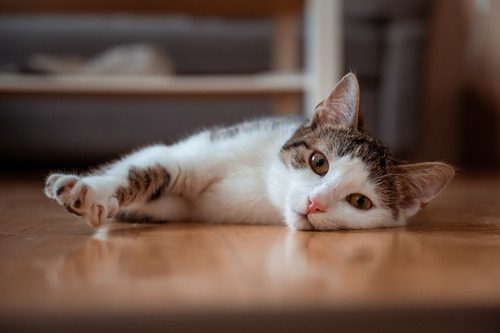Signs of Heatstroke in Cats
As the temperatures rise, our feline friends are at risk of heatstroke, a serious and potentially life-threatening condition. Understanding the signs of heatstroke in cats can help you take swift action and seek veterinary care when needed. At Parkway Veterinary Emergency Clinic in Lakeland, FL, we are here to provide you with essential information on recognizing the signs of heatstroke in cats and what steps you should take if you suspect your cat is affected. Call us at (863) 665-3199 if you need immediate assistance.

What is Heatstroke in Cats?
Heatstroke occurs when a cat’s body temperature rises to dangerous levels due to excessive heat exposure. Unlike dogs, cats are less likely to pant as a way of cooling down, which makes them more susceptible to heat-related issues. Cats regulate their body temperature through limited sweating via their paws and by seeking cooler environments. When these methods fail, heatstroke can set in quickly.
Early Signs of Heatstroke in Cats
Recognizing the early signs of heatstroke in cats can make a significant difference in their recovery. Pay attention to the following symptoms:
Heavy Panting
While cats typically do not pant, heavy panting in a hot environment can indicate that your cat is struggling to cool down. This is often one of the first signs of heatstroke in cats and should not be ignored.
Restlessness and Agitation
Cats suffering from heatstroke may become restless and agitated. They may pace, meow excessively, or seem unable to find a comfortable spot. This behavior is a sign that they are experiencing discomfort due to the heat.
Drooling
Excessive drooling is another indicator that your cat might be overheating. Unlike their usual grooming behavior, this drooling is often accompanied by other signs of distress.
Elevated Heart Rate
A cat’s heart rate increases when they are overheated. You may notice that their pulse is rapid when you gently feel their chest. This is a clear sign that their body is under stress due to high temperatures.
Advanced Signs of Heatstroke in Cats
If early signs are not addressed, heatstroke can progress rapidly to more severe symptoms. Be vigilant for the following advanced signs:
Lethargy and Weakness
A cat suffering from advanced heatstroke will become lethargic and weak. They may lie down and refuse to move, indicating that their body is starting to shut down.
Vomiting and Diarrhea
Heatstroke can cause gastrointestinal distress, leading to vomiting and diarrhea. These symptoms can further dehydrate your cat and exacerbate their condition.
Bright Red or Pale Gums
Check your cat’s gums by gently lifting their lip. Bright red gums indicate that their body is overheating, while pale gums suggest poor blood circulation, both of which are severe signs of heatstroke.
Collapsing or Seizures
In extreme cases, a cat may collapse or have seizures due to heatstroke. This is a medical emergency, and immediate veterinary care is essential.
Factors That Increase the Risk of Heatstroke in Cats
Certain factors can make some cats more prone to heatstroke than others. Understanding these can help you take preventative measures:
- Breed and Coat Type: Cats with thick, long fur or brachycephalic breeds (those with short, flat faces) are more susceptible to overheating. Their coat or facial structure makes it harder for them to cool down effectively.
- Age and Health Conditions: Senior cats, kittens, and those with underlying health issues such as heart disease or respiratory problems are at a higher risk of heatstroke. Their bodies are less efficient at regulating temperature.
- Environment: Cats living in hot, humid climates or those left in confined spaces like cars are at an increased risk of heatstroke. Always ensure your cat has access to cool, shaded areas and fresh water.
Preventing Heatstroke in Cats
Preventing heatstroke is crucial in keeping your cat safe during hot weather. Here are some steps you can take:
Providing a Cool Environment
Ensure your cat has access to air-conditioned spaces or fans during hot weather. Create cool resting spots with shaded areas and avoid placing your cat’s bed in direct sunlight.
Hydration is Key
Keep fresh water available at all times. Consider placing multiple water bowls around your home to encourage your cat to drink more. Adding ice cubes to the water can also help keep it cool.
Avoiding Outdoor Exposure
Limit your cat’s outdoor activities during peak heat hours. If your cat enjoys spending time outside, create shaded areas and provide a cool, sheltered spot where they can retreat.
When to Seek Veterinary Care
Knowing when to seek veterinary care is crucial in treating heatstroke in cats effectively. If you notice any of the advanced signs of heatstroke, call Parkway Veterinary Emergency Clinic at (863) 665-3199 immediately.
Immediate Actions to Take
Before heading to the vet, there are a few steps you can take to help lower your cat’s body temperature:
- Move your cat to a cool, shaded area.
- Offer small amounts of cool water.
- Use a damp cloth to gently wipe their paws and belly.
- Avoid using ice or cold water, as it can cause shock.
Veterinary Treatment
At the veterinary clinic, your cat will receive comprehensive care to stabilize their condition. Treatment may include intravenous fluids, oxygen therapy, and monitoring of vital signs. Early intervention is key to a full recovery.
Importance of Monitoring Your Cat’s Health
Regular monitoring of your cat’s health can help prevent heatstroke and other heat-related issues. Keep an eye on their behavior during hot weather and take proactive measures to ensure they stay cool and hydrated. By understanding the signs of heatstroke in cats and knowing how to respond, you can protect your feline friend from this dangerous condition. If you have any concerns or need immediate assistance, call Parkway Veterinary Emergency Clinic in Lakeland, FL, at (863) 665-3199.
Recent Posts
About Us
At Parkway Veterinary Emergency Clinic, our team consists of experienced veterinarians and veterinary professionals dedicated to providing exceptional after-hours emergency vet care to the pet community of Lakeland.
